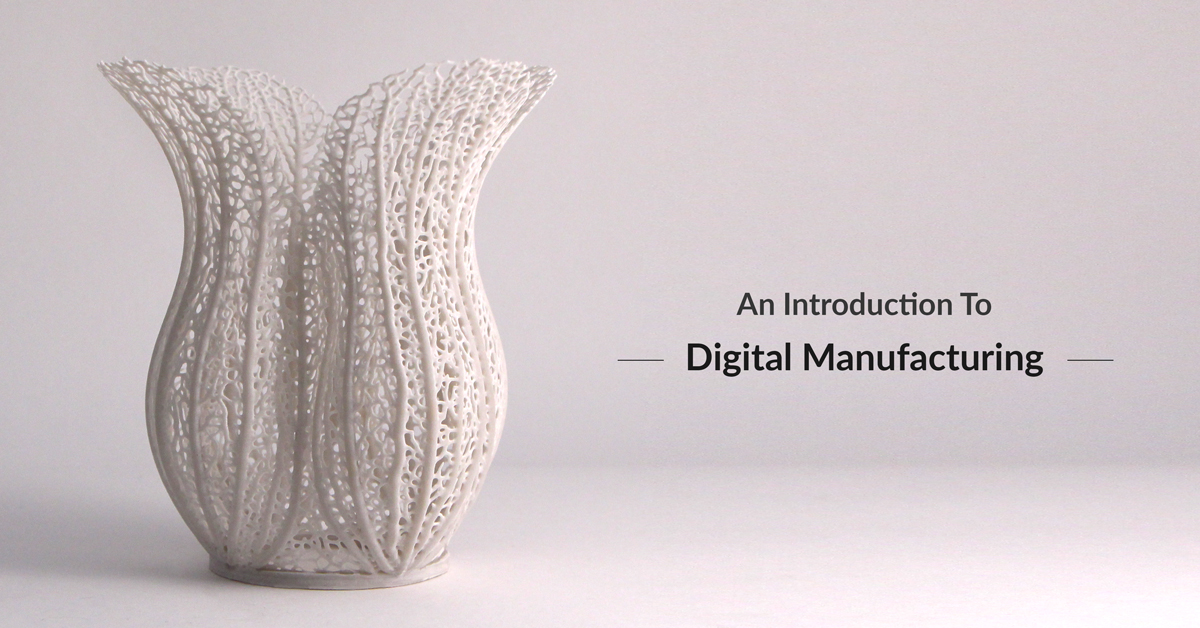Learn The Top Advantages of Additive Manufacturing
Historically, high volume production required manufacturing techniques like injection molding, which is associated with high upfront costs but low costs per part. As additive manufacturing techniques improve, they become increasingly viable for medium to high volume part production. Before we go any further, let’s define additive manufacturing and go over the more popular processes.
What is Additive Manufacturing?
Additive manufacturing refers to the process by which a part is ‘additively’ formed generally by building it up layer by layer. An object is sliced into individual sections and is printed using a variety of different techniques.
You might be familiar with a process called FDM (Fused Deposition Modelling) by which each layer is formed by extruding molten plastic. Another popular technique is SLA (Stereolithography) where each layer is formed via a UV laser that hardens a photo-polymer resin. There are an impressive number of techniques and you can learn about some of the more popular ones in depth by checking out our blog post on The 4 3D Printing Technologies You Should Know.

Advantages of Additive Manufacturing
One of the primary advantages of additive manufacturing is its ability to rapidly produce custom objects. This is especially appealing for product designers looking to quickly iterate on their creations but has also seen wide adoption in industries like Dentistry where each patient requires their own unique solution.
As 3D printers continue to advance to produce high quality parts at high levels of reliability, professionals are moving away from slow and cumbersome techniques for producing custom objects. Instead, they are transitioning almost entirely to additive manufacturing.
Lyman Connor is helping to kickstart this shift to additive manufacturing techniques for custom solutions with his company, Handsmith. Custom prosthetic hands can cost over $45,000 and Handsmith is trying to reduce this by producing the customized components almost entirely on the Formlabs Form 2. A few years ago, access to affordable SLA printers required for these high accuracy applications might have been non-existent, but costs and reliability have since improved making the technology significantly more accessible.

As additive manufacturing continues to be the primary technique for the production of custom goods, the challenge becomes scaling output to reach the required part volumes. Manufacturers like Formlabs streamline this process with a commitment to machine reliability which minimizes wasted time and by providing an end-to-end solution for post-processing your parts. They’ve also provided resources that teach you how to scale your output and manage multiple printers.

For high volume parts that do not require customization, conventional manufacturing techniques like injection molding are still preferred. Still, additive manufacturing provides techniques for reducing upfront costs.
Additive Manufacturing and Injection Molding
In a typical injection molding setup, the mold must be CNC’d or ‘subtractively manufactured’ by milling away sections of a solid block of aluminum. Not only is this wasteful in terms of material usage, it also comes with high machine costs and requires an operator educated in programming the machine.
New High Temperature Resins allow these molds that to be 3D printed directly. This eliminates waste and significantly reduces machine costs and setup times. High Temperature resin has an HDT of 289C @ 0.45MPa which comfortably withstands common thermoplastics like ABS and LDPE.
![]()
Whether your goal is to create a number of customized objects or to reduce upfront costs associated with conventional production techniques, digital manufacturing continues to provide new solutions to meet your needs.







